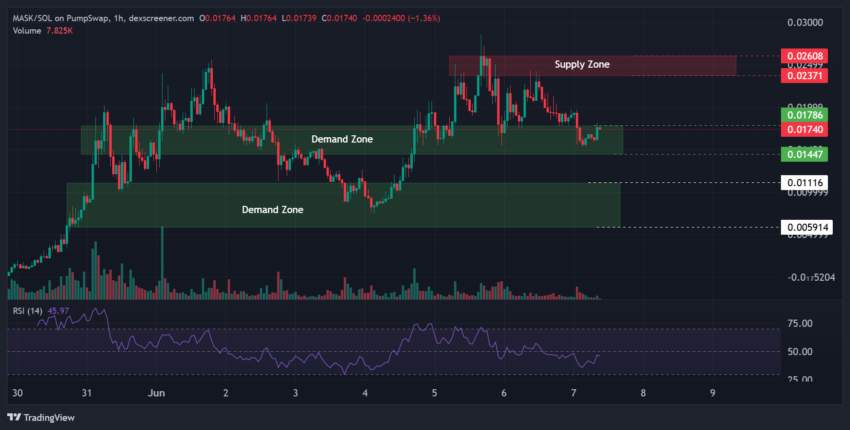Mask Network (MASK) is one of the unexpected victims of the very public and personal conflict between Donald Trump and Elon Musk.
This crypto-friendly power duo's digital bromance once sparked a wave of politically aligned meme coins. Now, amid bitter accusations and threats between the two billionaires, retail traders appear to be leaving the ecosystem, and MASK is feeling the heat.
Trump vs Musk Aftermath…MASK Price Decline
Mask Network (MASK) is one of the unintended casualties due to the conflict between President Donald Trump and Elon Musk.
As Trump and Musk's undignified public divorce dominated the internet, the bromance's collapse prompted MASK token holders to sell.
After a month-long rally, the MASK token price began declining from the beginning of this week. This decline coincided with the start of Trump and Musk's bromance breakup.
Where is the man who wrote these words?
— Elon Musk (@elonmusk) June 5, 2025
Was he replaced by a body double!? https://t.co/N4Mliip5U4
Specifically, on June 5th, when tensions between President Donald Trump and Elon Musk exploded, leading to personal attacks and financial threats, the MASK token peaked at $0.02853. The next day, it dropped 45% to $0.01560.
"This Mask crash hit my short position again. I'm getting all of mine back! Dropped 30% from 2.9 to 1.8 in half a day." – Trader @Elizabethofyou
According to analysts, the cryptocurrency market is struggling as retail interest wanes. At the time of writing, the MASK token is trading at $1.86, with CoinGecko showing a 33.7% decline over the past 24 hours.

MASK is not the only token caught in the crossfire. According to GeckoTerminal, the Kill Big Beautiful Bill (KBBB) token has dropped 67%, and MUSK (Official Musk) has nearly collapsed by 90%.
Even the meme coin AP (American Party), recently launched to gather conservative support, has fallen 80%.
Psychological Decline After Political Meme Coin Collapse
Analysts say the price decline is more related to the reduction in meme-based speculation after the Trump-Musk rift, rather than MASK's fundamental factors.
"MASK is being promoted everywhere and honestly looks good. Using GeckoTerminal to research MASK, I noticed that the top holders only own about 10%, indicating a clean distribution. The Gecko Terminal score of 97 is the strongest I've seen, indicating safety." – Analyst @TheDefiApe
This strong GeckoTerminal score reflects the project's healthy on-chain fundamental factors. However, as political sentiments flip, panic selling has not stopped.
Indeed, data from multiple token trackers shows retail volume is generally exiting politically themed tokens.

What will be the next move for the MASK token amid the Trump and Musk conflict?
Originally designed as a tool to introduce Web3 functionality to traditional social media, this token is now entangled in an uncontrollable narrative.
While the token has never been explicitly linked to Trump or Musk, retail traders consider it guilty by association.
This highlights how the Trump-Musk drama dominating headlines obscures serious DeFi innovation for personal vendettas.
Analysts warn that volatility may continue unless the project shifts to its core utility narrative or shakes off the speculative crowd.
However, some traders remain optimistic about MASK as the fundamental factors are still strong.
Why I'm now even MORE bullish on $MASK after the recent dip…
— Matt Lorion (@mattlorion_) June 7, 2025
NFA pic.twitter.com/29ApJAOrEP
Meanwhile, a simple analysis indicates that the MASK token price was trading within a demand zone between $0.01786 and $0.01447 at the time of reporting.
In cryptocurrency trading, a demand zone is a price area with strong buying interest that prevents price decline. This cluster of buyers often leads to price rebounds or upward reversals.

Indeed, historical patterns suggest the MASK token price typically tests this zone and then rises again. The Relative Strength Index (RSI) supports this outlook, rising to show increasing momentum.
However, to confirm an upward trend, the Mask Network price must also overcome resistance from the supply zone between $0.02371 and $0.02608.





